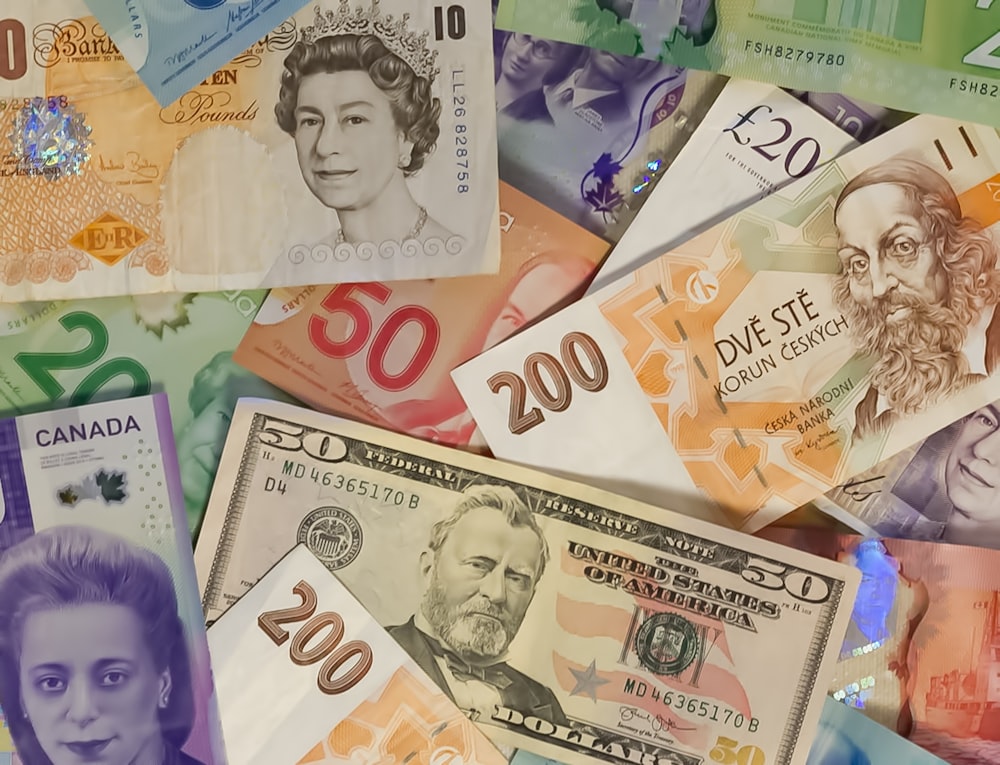FX Daily: Dollar’s Downside Risks Are Shrinking
Image Source: Unsplash
We think that the combination of a material improvement in the global risk environment and further USD-adverse widening of short-term rate differentials is unlikely, and therefore expect the (now less overbought) dollar to find a floor soon. This means that a EUR/USD return below 1.0700 in the coming days looks more plausible than another rally.
USD: Bearish arguments are not very strong
The dollar is set to face a second consecutive week of losses against all G10 currencies, as yesterday’s very positive session in US equities helped Asian equities trade in the green along with most European stock index futures. While the risk sentiment channel has, by and large, remained the primary driver of FX moves, the market’s tentative speculation about a pause in the Fed’s tightening cycle in September is surely contributing to keeping the dollar soft. In the past week, we have seen around 10bp of tightening being priced out of the Fed’s rate expectations for this year, while the likes of the ECB have seen all but a consolidation of expected tightening plans.
In our view, however, it's hard to see a much calmer risk environment amid global monetary tightening and multiple downside risks (China, Russia/Ukraine), and a further shrinking of the USD’s short-term rate advantage over other G10 currencies, given that the FOMC rhetoric is still very hawkish. We see a higher chance of recovery in US rate expectations, which should put a floor under the greenback. When adding a more balanced positioning picture following the latest moves, we think that the dollar’s downside risk is now looking less pronounced, and we favor instead a recovery to the 103.00 level in DXY.
Today, risk-sentiment dynamics are still set to drive the vast majority of dollar moves, although markets will keep an eye on any drop in the US personal spending figures for April and in the Fed’s preferred inflation measure – the PCE deflator. There are no scheduled Fed speakers.
EUR: Upside potential is more limited now
EUR/USD is making a fresh attempt at breaking significantly above 1.0750 (the 50-day moving average) this morning, continuing to benefit from the soft dollar environment and some recent eurozone data having left markets more comfortable with pricing in front-loaded tightening (100bp) by the ECB this year.
As discussed above, we see a higher chance of some recovery in the dollar from the current levels rather than an extension of the drop, and with a lot of ECB tightening now in the price, the room for the euro to benefit further from the monetary-policy factor appears limited. We expect a return below 1.0700 in the coming days.
Today, we’ll hear from the ECB Chief Economist Philip Lane, whose recent comments have however merely backed President Christine Lagarde’s recent guidance.
GBP: Bar to trigger a hawkish repricing is set high
The pound received only some modest support yesterday as British Chancellor Rishi Sunak announced a £15bn support package to fight the rising cost of living. The fiscal measures should in theory allow the Bank of England to fully focus on fighting inflation and feel more comfortable hiking interest rates – ultimately, a GBP positive. However, markets had previously been quite reluctant to price out the bigger chunk of the BoE tightening cycle and were already pricing in a policy rate in the 2.00-2.25% area for year-end before Sunak’s fiscal package. This helps explain the pound’s somewhat muted reaction yesterday, and also suggests the bar to trigger further hawkish repricing in the BoE rate expectation curve is quite elevated.
In the longer run, as we expect the BoE to underdeliver compared to rate expectations, the pound is still looking likely to face some pressure from the short-term rate differential side. For now, swings in risk sentiment should continue to drive most day-to-day moves. A consolidation around 0.8450-0.8500 in EUR/GBP seems plausible.
HUF: Another blow for the forint but let's not throw it overboard
Wednesday's decision by the Hungarian government regarding the state of emergency found the forint unguarded and suddenly we are at the weakest levels since the beginning of March. Yesterday's announcement of the tax package, which is expected to bring in more than HUF800bn this year and next, did not help the forint much. For now, the HUF has settled in the 390-395 range. With such FX weakening, markets are raising bets on an emergency rate hike next week. However, in our view, this is far from certain. Thus, market disappointment may lead to further forint weakening to the 400 level, which would be the weakest in history.
On the other hand, it is necessary to keep in mind that the market has already priced in a lot of negative news, led by the Ukrainian conflict and the halt of EU money inflows. In addition, the central bank's dovish tone may quickly revert back to aggressive rate hikes after the next inflation print. Thus, we are negative on the forint in the short term, but we continue to monitor headlines that should unlock the hidden potential of the forint in the second half of the year.
Disclaimer: This publication has been prepared by the Economic and Financial Analysis Division of ING Bank N.V. (“ING”) solely for information purposes without regard to any ...
more



